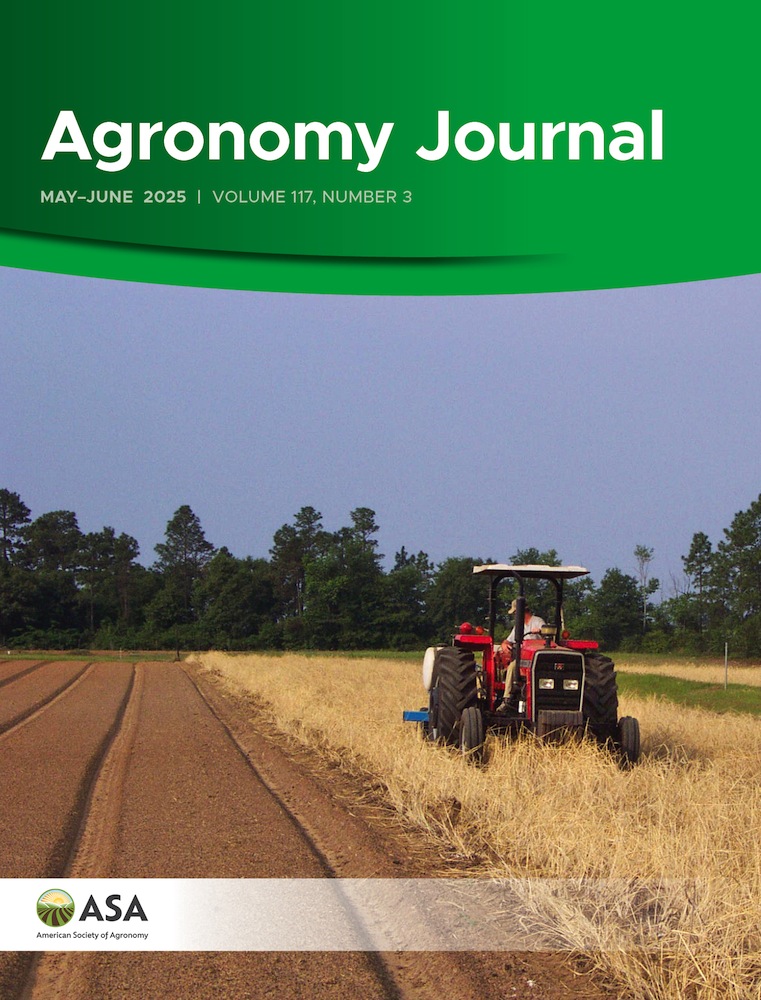Ver ítem
- xmlui.general.dspace_homeCentros Regionales y EEAsCentro Regional Buenos Aires NorteEEA PergaminoArtículos científicosxmlui.ArtifactBrowser.ItemViewer.trail
- Inicio
- Centros Regionales y EEAs
- Centro Regional Buenos Aires Norte
- EEA Pergamino
- Artículos científicos
- Ver ítem
Low-input interpretable models to forecast maize yield at multiple scales based on absorbed radiation
Resumen
Most crop yield forecast models operate at coarse scales (e.g., county or region) or need extensive input data for finer resolutions. Here, we present maize (Zea mays L.) yield forecast models that require minimal user data and operate at field and regional scales throughout the growing season. Using 1853 maize field-years in Argentina, with known location, sowing date, and yield, our models leveraged absorbed radiation (from satellite imagery),
[ver mas...]
Most crop yield forecast models operate at coarse scales (e.g., county or region) or need extensive input data for finer resolutions. Here, we present maize (Zea mays L.) yield forecast models that require minimal user data and operate at field and regional scales throughout the growing season. Using 1853 maize field-years in Argentina, with known location, sowing date, and yield, our models leveraged absorbed radiation (from satellite imagery), temperature-based phenology, regional site-year properties, El Niño-Southern Oscillation (ENSO) phase predictions, and sowing period. At the field scale, our models achieved high accuracy at physiological maturity, with a mean error of 1 t ha−1 (16%). Yield forecasts were mainly driven by absorbed radiation during the reproductive phase and a regional factor. Early-season forecasts incorporated ENSO and sowing period, but with reduced accuracy. When scaled to regional forecasts, the models performed even better, with a mean error of 0.3 t ha−1 (4%). These results combine a novel case of yield forecast because of the low data requirements from users, high anticipation (30–90 days before harvest), and good levels of accuracy at both field and regional scales. Additionally, the models’ interpretability makes them valuable diagnostic tools for post-season analysis.
[Cerrar]

Autor
Menendez-Coccoz, Martin;
Rotili, Diego Hernán;
Otegui, María Elena;
Martini, Gustavo;
Paolini, María;
Di Bella, Carlos;
Piñeiro, Gervasio;
Oesterheld, Martín;
Fuente
Agronomy Journal 117 (3) : e70089. (May/June 2025)
Fecha
2025-05
Editorial
Wiley
ISSN
0002-1962
1435-0645 (online)
1435-0645 (online)
Formato
pdf
Tipo de documento
artículo
Palabras Claves
Derechos de acceso
Restringido
 Excepto donde se diga explicitamente, este item se publica bajo la siguiente descripción: Creative Commons Attribution-NonCommercial-ShareAlike 2.5 Unported (CC BY-NC-SA 2.5)
Excepto donde se diga explicitamente, este item se publica bajo la siguiente descripción: Creative Commons Attribution-NonCommercial-ShareAlike 2.5 Unported (CC BY-NC-SA 2.5)


